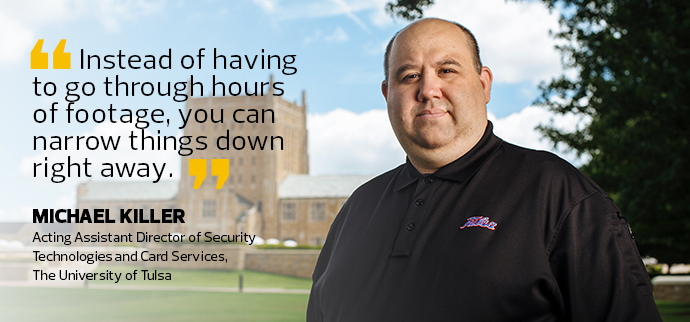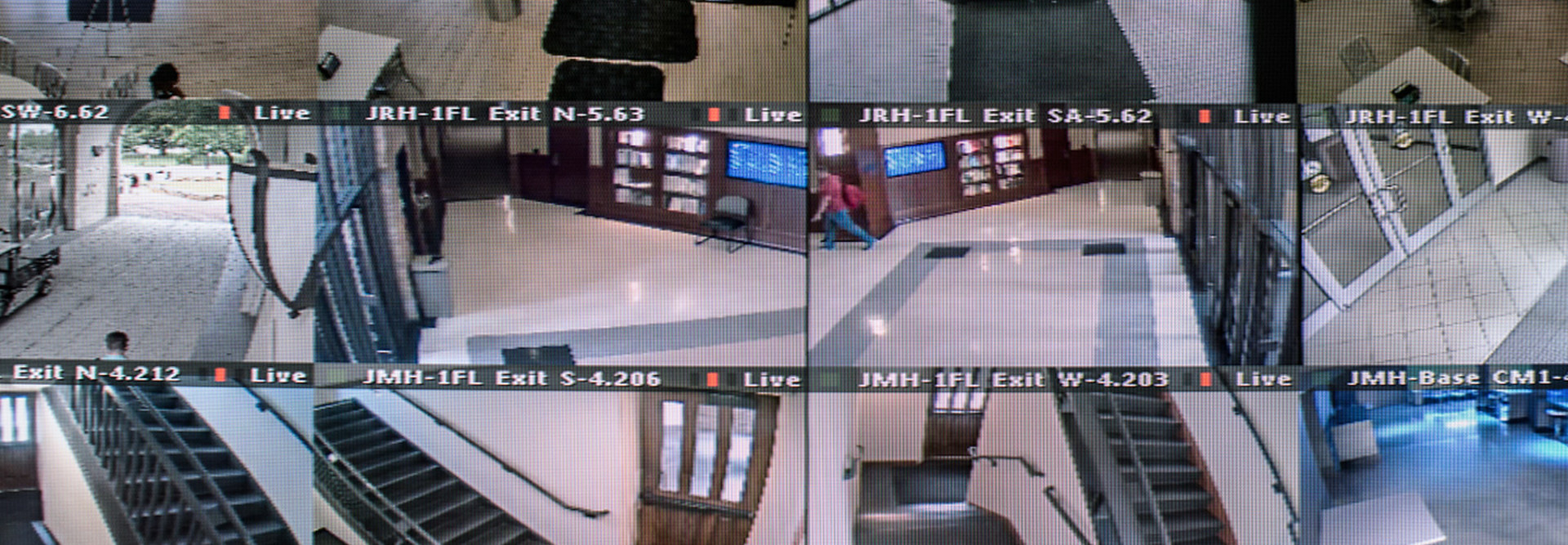Analytics Makes Fast Work of Video Surveillance Searches
At first glance, campus security at The University of Tulsa looks like it does at any other institution. Trained officers patrol the grounds 24 hours a day, assisted when necessary by local police. Operations revolve around a central control room, where dispatchers monitor security systems and field incoming calls.
“For the most part,” says Michael Killer, acting assistant director of security technologies and card services, “we’re set up pretty much the way you might expect.”
That setup includes a dozen big-screen monitors arranged along the walls and side by side across dispatchers’ desks. It also includes more than 600 surveillance cameras from Axis Communications, placed throughout campus in inconspicuous locations. The dispatchers use their computers to control and adjust the camera views that appear on their screens, Killer says, and they can simultaneously display as many images as they like.
“Everything they’re seeing is live,” he says. “It’s a direct feed from the cameras to their desks.”
That kind of capability, of course, is common in the world of campus security, where nearly 90 percent of higher education institutions either use or plan to use video surveillance. Where Tulsa’s system is different, Killer says, is in the way those cameras use an integrated analytics program to improve his team’s capacity for image review.

SIGN UP: Get more news from the EdTech newsletter in your inbox every two weeks!
Analytics Helps Security Narrow the Search
Before integrating a video analytics solution, Killer says, an officer with only minimal information about a suspect had to analyze extensive video footage. The long, tedious process prompts Killer to make the inevitable comparison: “kind of like looking for a needle in a haystack.”
With analytics software embedded in the IP-enabled cameras, that job is almost entirely automated.
“You can go into the software and enter whatever you have, and it will start pulling data matching your parameters,” Killer says. For example, an officer might be able to pinpoint what a suspect was wearing or whether he was carrying a backpack.
From there, the system builds an event timeline that the security team can review frame by frame. “Instead of having to go through hours of footage, you can narrow things down right away. It shows you exactly where to focus your efforts,” says Killer.
According to analysts, the technology is gaining ground at colleges around the country as artificial intelligence algorithms get better at integrating with high-resolution cameras to identify objects and patterns of activity.
For example, applications with facial recognition systems, paired with tools such as Cisco’s video surveillance manager, can control access to residence halls. Similar systems can scan the license plates of visiting vehicles.
Video Analytics Adoption Is Poised to Grow
For now, campuses that have adopted video analytics are still in the minority, but that may be about to change. According to a 2016 Campus Safety survey, although just 13 percent of colleges use analytics-enabled security systems today, another 12 percent are considering them for near-future implementation. Analysis by the research firm MarketsandMarkets estimates the global market for video analytics will more than quadruple by 2022, to more than $11 billion.
“Video analytics has come a long way in the past few years,” notes a Campus Safety report on surveillance integration trends, adding that the right solution can serve as a “force multiplier” for public safety departments.
Ray Bernard, a security program consultant who has written about video analytics for the Security Industry Association, agrees that this emerging technology is poised to revolutionize campus security.
“There’s a lot of R&D going into this right now, and the systems are getting better and faster all the time,” he says. In light of the physical security threats that are on colleges’ radar today, he adds, video analytics starts to look like a smart investment.
Among the latest advancements, Bernard says, are systems that leverage wireless network cameras to minimize costly cabling and cloud-based processing services that reduce the need for onsite infrastructure.
“For most schools now, getting up to speed is not an issue,” Bernard says. “That’s especially been the case as the technology has become more affordable.”

Software Alerts Streamline Monitoring
At The University of Tulsa, Killer says the analytics adoption didn’t cause his team to miss a beat.
“We definitely had to do some configurations, but otherwise it was ready out of the box,” he says. Since then, he adds, the system has been essentially invisible: “Thankfully, our campus is pretty quiet, so it’s not used as often as you might think.”
Still, Killer says, the capabilities that the software delivers are helping his team in many ways, from improving their ability to monitor off-campus properties to giving them a better handle on what’s happening in the university’s parking lots.
“You can draw a virtual line in the software, so when something crosses a certain plane, it sets off an alert,” says Killer. “If a student pulls in to park late at night, we’ll have a camera that will follow them from their car to their residence.” And if the folks in the control room see anything suspicious? “They’ll send out an officer to make sure everything’s all right.”








